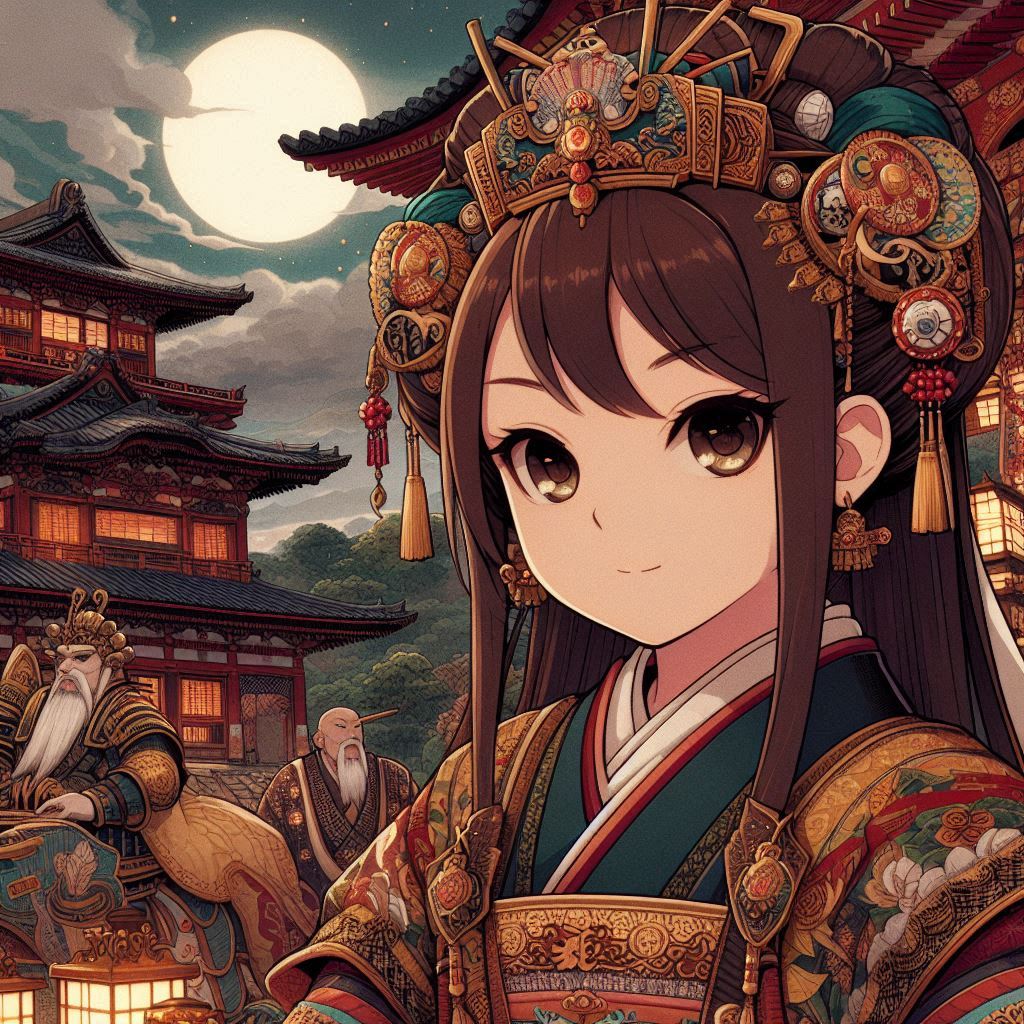Introduction.
The Sui Dynasty, a Chinese history book compiled in the 7th century, contains important descriptions of Japan (then called Wa-koku) in its biography of the eastern barbarians.

- geographical location and natural environment
In the Sui Dynasty Records, the location of Japan is described as ‘in the sea southeast of Baekje and Silla’. The Sui Shu also describes the land area as approximately 5,000 ri (approximately 2,000 km) in size, with many mountains and forests, and a mild climate suitable for agriculture. In particular, rice cultivation flourished and it is described that it was possible to grow rice in two seasons a year.

- Governing system and political structure
The king is called Ametarishihiko, which is thought to refer to Emperor Suiko. The kingship was hereditary, with the king having an ooomi under him who administered the affairs of government. This is interpreted as reflecting the power of the Soga clan at the time.
It also states that there were 12 ranks in the official rank system. each distinguished by the colour and shape of their crowns. This description is thought to reflect the Twelve Grades of Crown Rank established during the reign of Emperor Suiko.

- social system and culture
The Sui Dynasty contains many interesting descriptions of Japanese social institutions and culture:
a. Clothing: The Sui Shu describes the custom of men wearing wide horizontal garments made of linen or silk, and women wearing a gown and their hair tied back.
b. Dwelling: the houses were wooden and the floor is said to have been built above ground level. This suggests the prototype of today’s stilt houses.
c. Food culture: rice was the staple food and chopsticks were used to eat. It also states that they liked to drink and had the custom of singing and dancing.
d. Marriage system: monogamy was common, suggesting that women had a relatively high status.
e. Penal system: fines were reportedly imposed for minor offences and the death penalty for serious offences.

- influence of Buddhism.
The Sui Dynasty records the spread of Buddhism in Japan. Many monks and temples existed, and it can be seen that Buddhism deeply permeated society. This is consistent with the adoption of Buddhism as a state religion during the reign of Prince Shotoku.

- diplomatic relations
There are detailed descriptions of diplomatic relations with the Sui Dynasty. Particularly noteworthy is the record of Japanese envoys dispatched to the Sui Dynasty. This is thought to refer to the envoys sent to the Sui Dynasty in 607 and 608.
Specifically, it records the famous episode in which the Japanese king sent a letter to the Sui emperor as ‘Hinode Tenshi’ (the Sunrise Prince of the Land of the Rising Sun). In response, the Sui dynasty’s Emperor Yo is said to have sent a reply as ‘Tenshi of the Western Land’ (西国天子). This diplomatic exchange suggests that Japan at the time was trying to assert its equal status with China.

- military power and weapons
The Sui Dynasty also contains descriptions of the military organisation and weapons of the Japanese state. It describes the use of weapons and armour such as bows and arrows, swords and armour. The existence of military forces using cavalry and ships is also suggested.

- economy and trade
There are also references to the economic situation in Japan. It is noted that valuables such as gold, silver and pearls were produced and that these were used as trade goods with China. Sericulture and silk production are also reported to have been carried out.

- customs and habits
The Sui Dynasty also contains interesting descriptions of the character and customs of the Japanese people. For example, it is said that the Japanese valued courtesy and had the custom of kneeling down to greet people. It also states that they had characters and had the custom of keeping historical records. This is thought to reflect the fact that kanji characters were beginning to be used in Japan at the time.

- association with Shintoism
While there are many references to Buddhism, there are also references to indigenous beliefs. This suggests the germination of a unique Japanese religion that was later systematised as Shinto. For example, nature worship and ancestor worship practices are described, which are consistent with the basic elements of Shinto.

- local governance
There are indications that a centralised system of governance was being established. Officials are said to have been dispatched to each region to collect taxes and maintain public order. This can be interpreted as an indication of the germ of governance by the Kinai administration prior to the Taika Reform.

Conclusion.
The descriptions of Japan (Wa-koku) in the Sui Dynasty Records (Sui Shu) are valuable historical documents that provide a Chinese perspective on Japan at the beginning of the 7th century. This was a period when Japan was beginning to establish itself as a nation and was actively engaged in exchanges with the continent. The descriptions in the Sui Dynasty are important clues for a more accurate understanding of the actual situation in Japan at that time, when interpreted in conjunction with archaeological evidence and historical documents from the Japanese side (e.g. Kojiki and Nihonshoki).
It should be noted, however, that these accounts are from the Chinese point of view and may contain some exaggerations and misunderstandings. It should also be taken into account that there is a time lag between the compilation period of the Sui Dynasty (636) and the period covered by the descriptions (mainly from the end of the 6th century to the beginning of the 7th century).
As such, the Sui Shu’s Biography of Dongyi occupies a very important position in the study of ancient Japanese history and is an indispensable historical source for understanding diverse aspects of Japanese politics, society, culture and diplomacy of the time.
NB.
This text is based on asking the AI; the AI’s answers may not always be correct. Important information should be checked.
#Asked AI #AI Illustration


